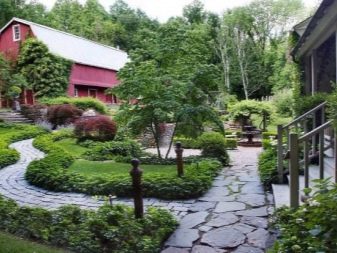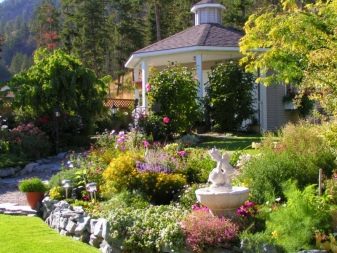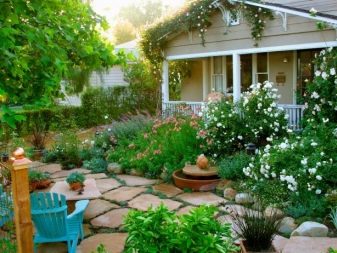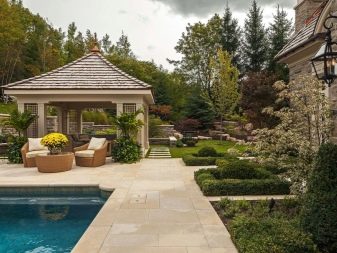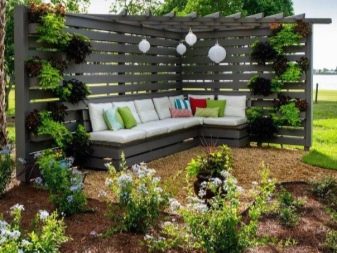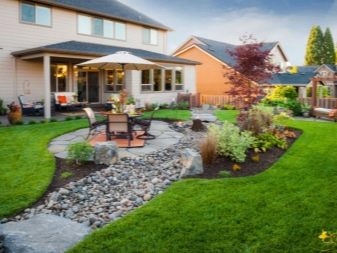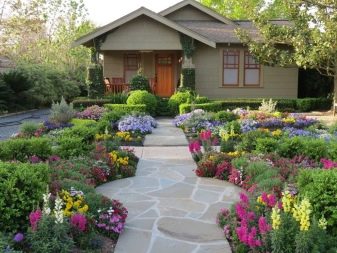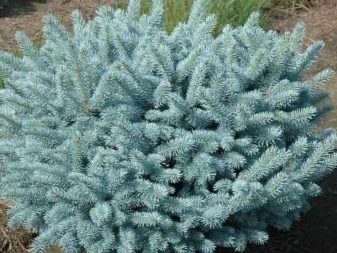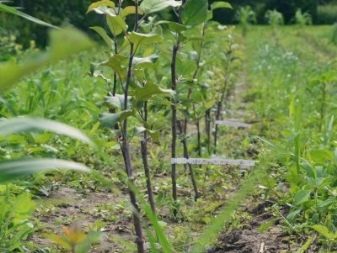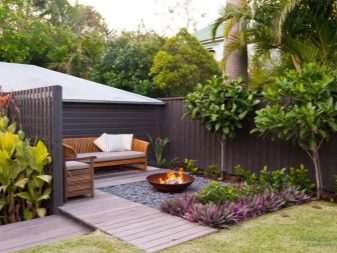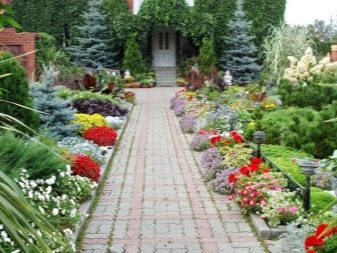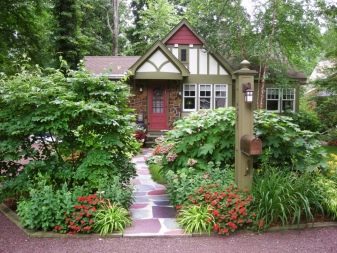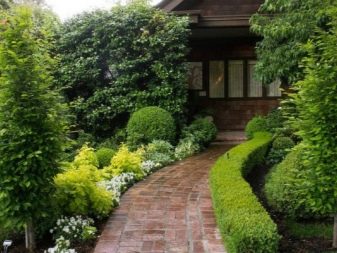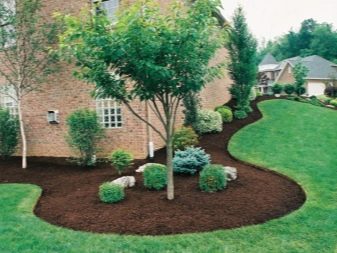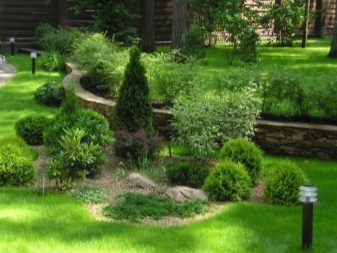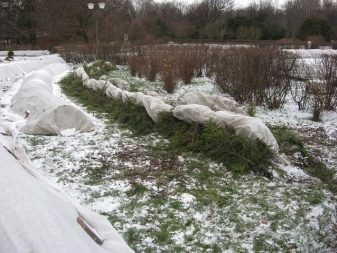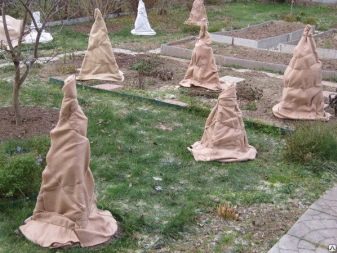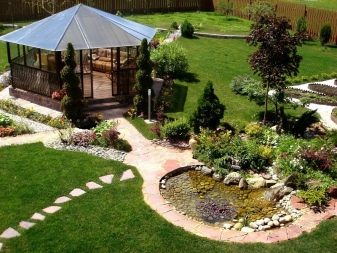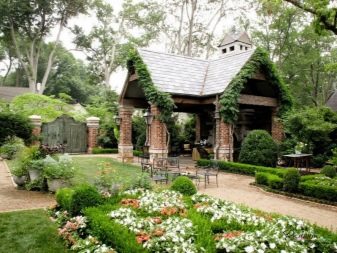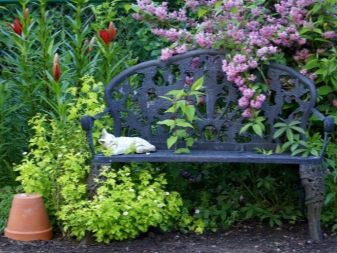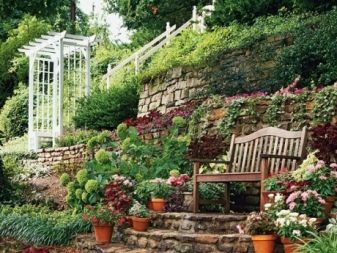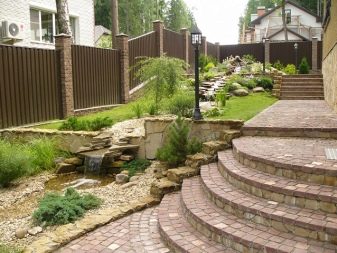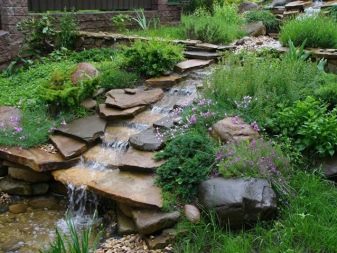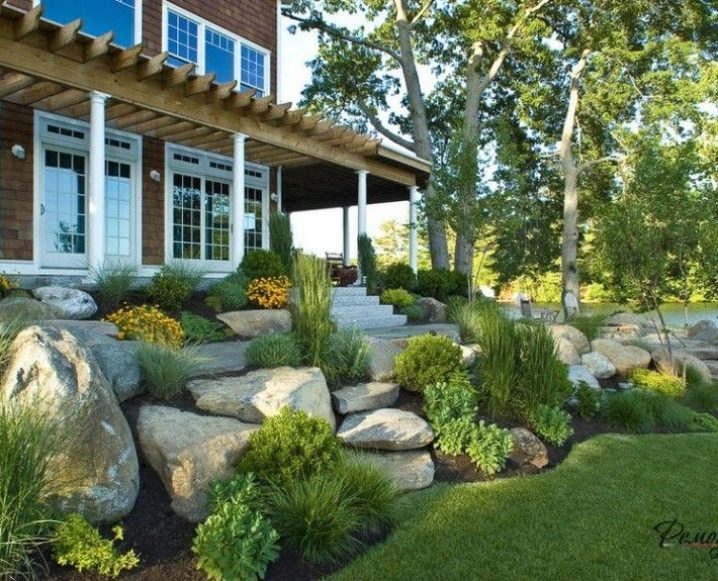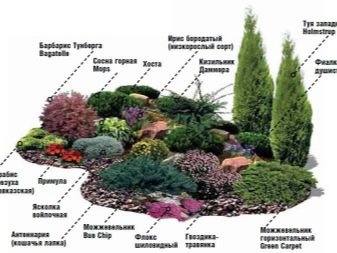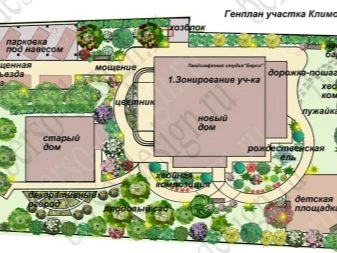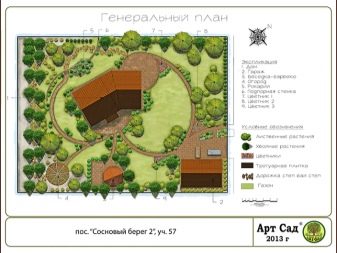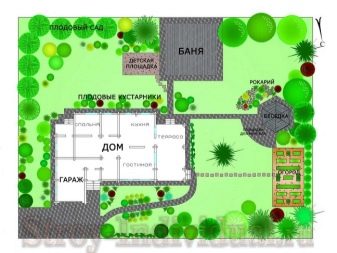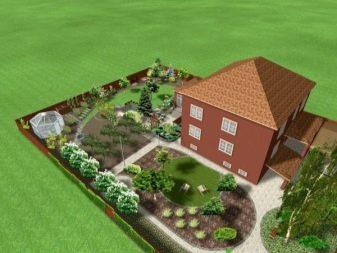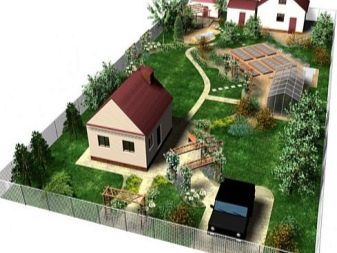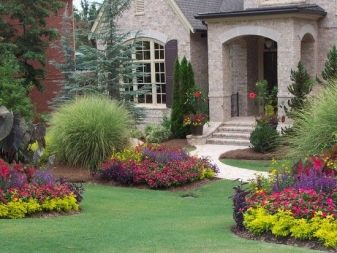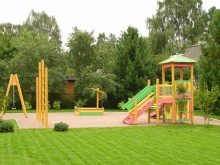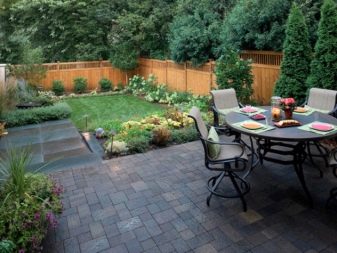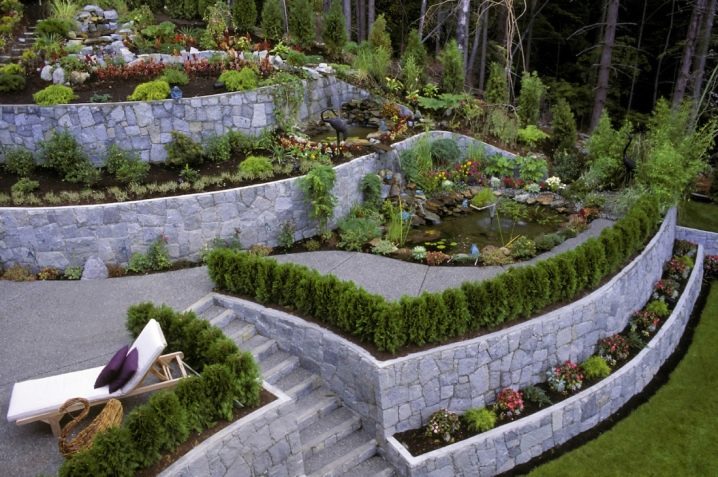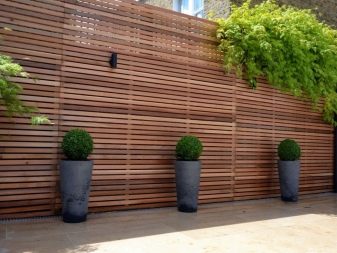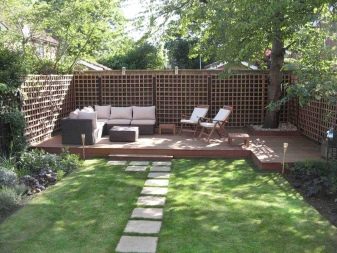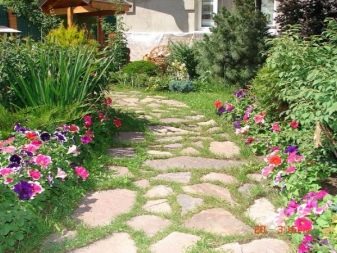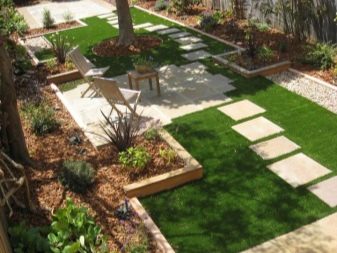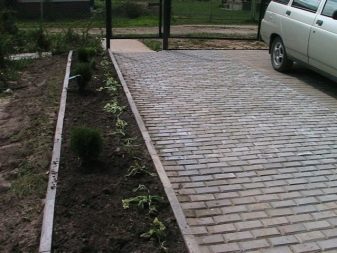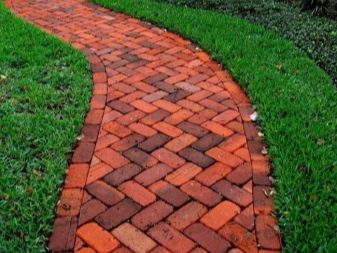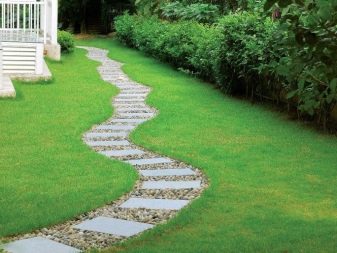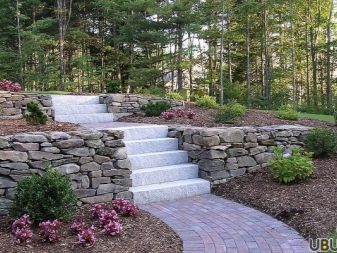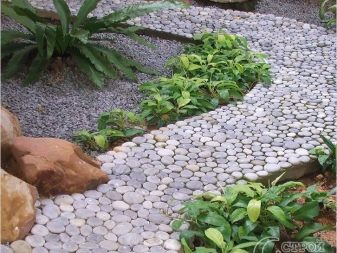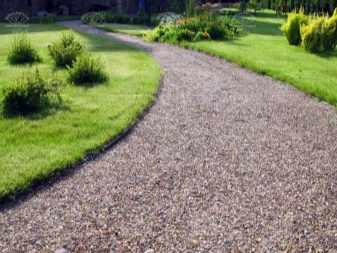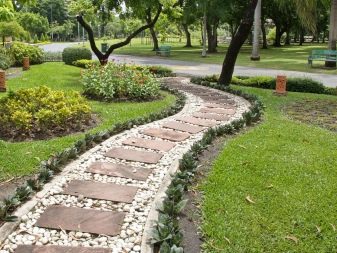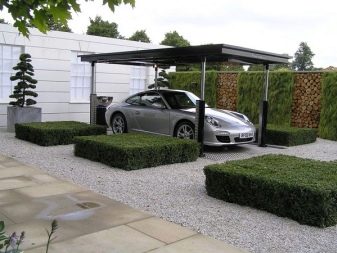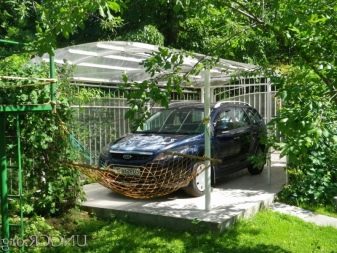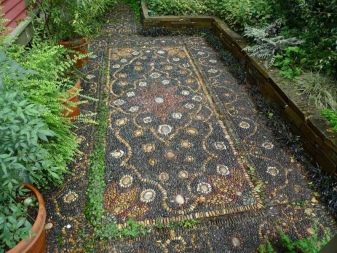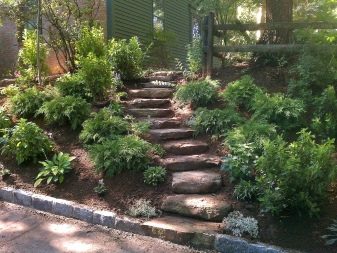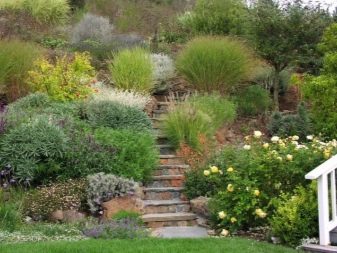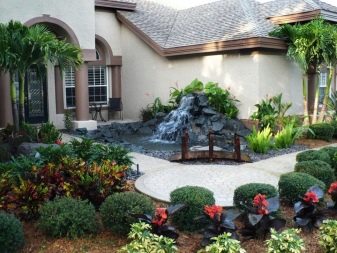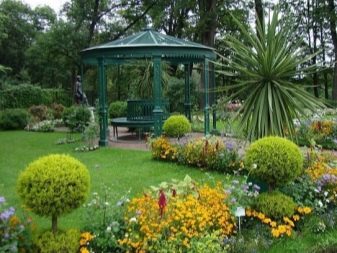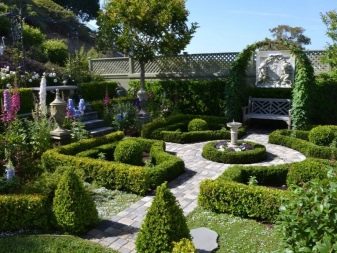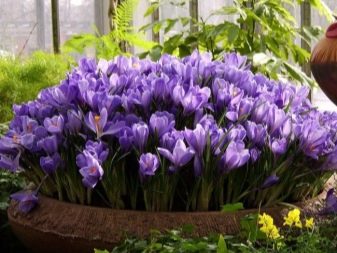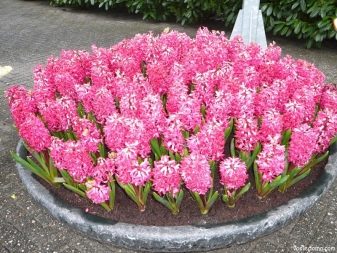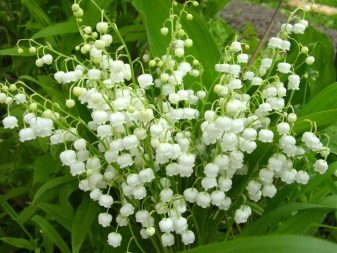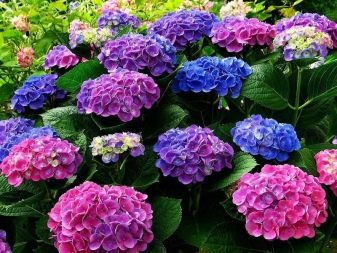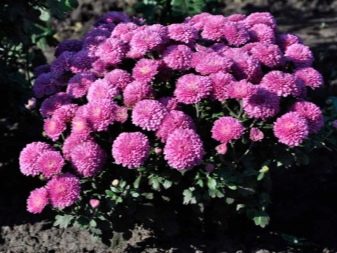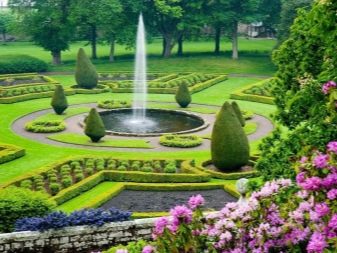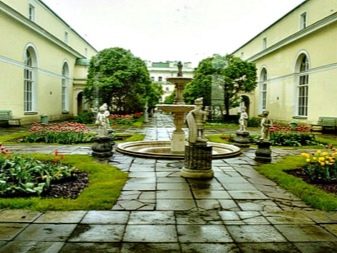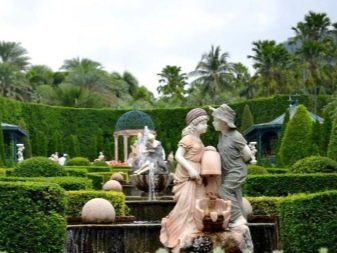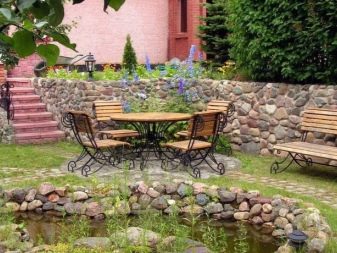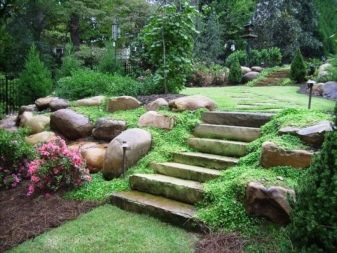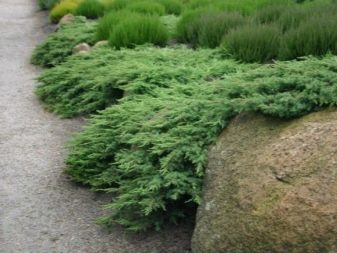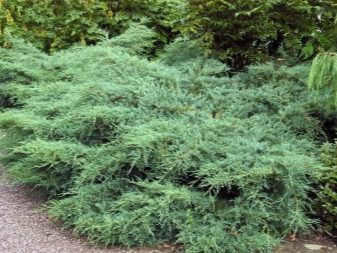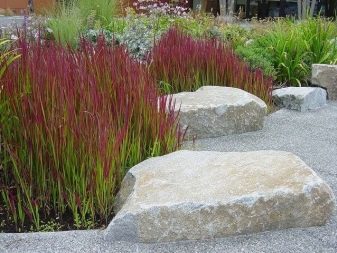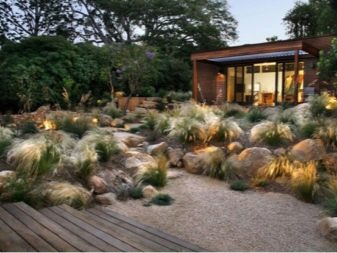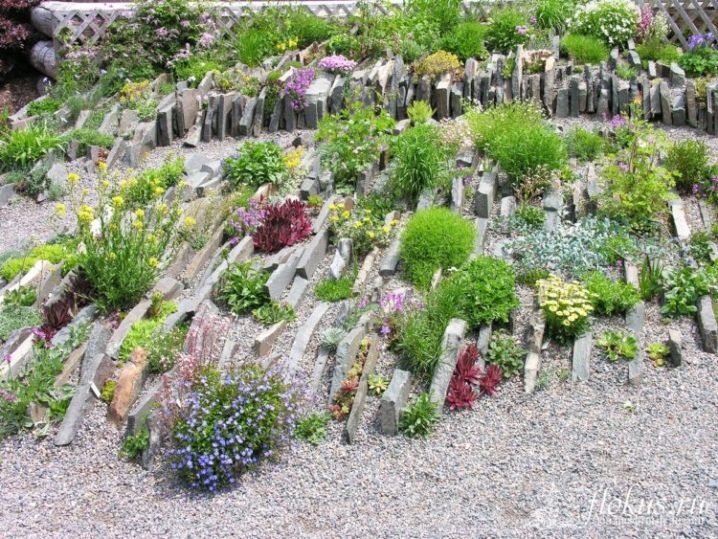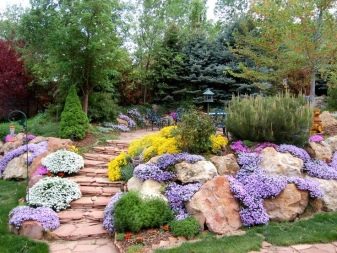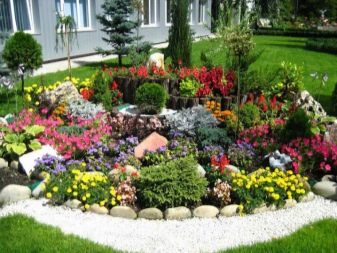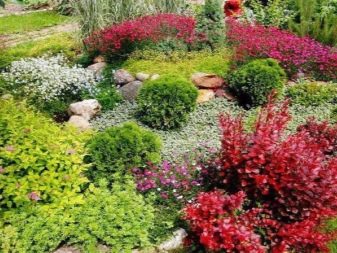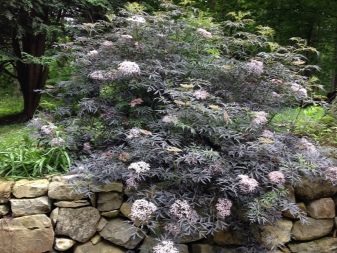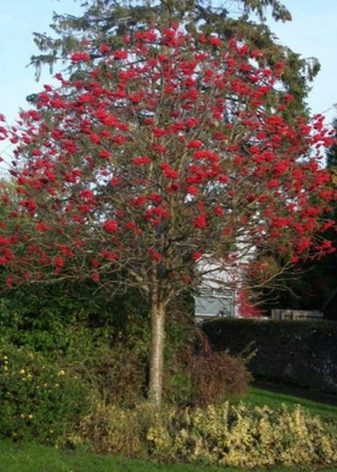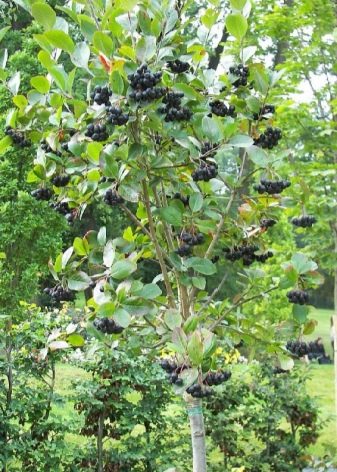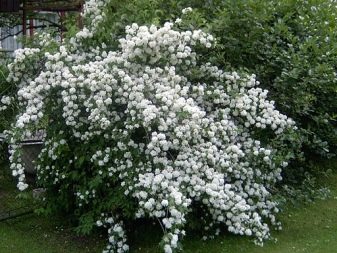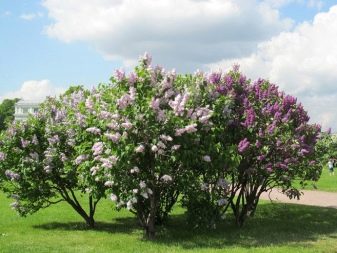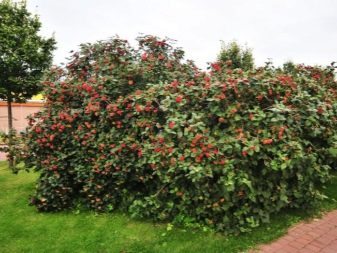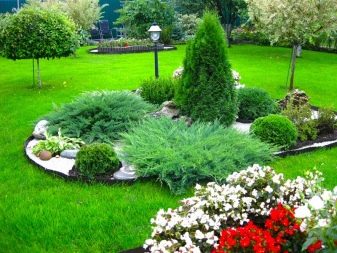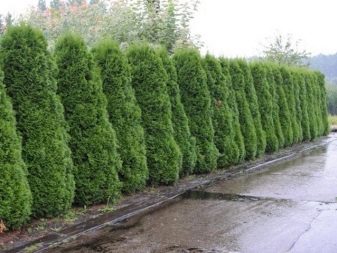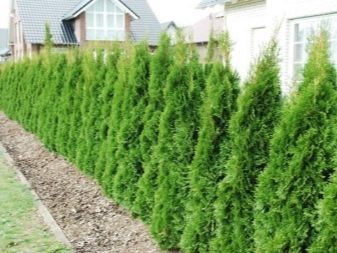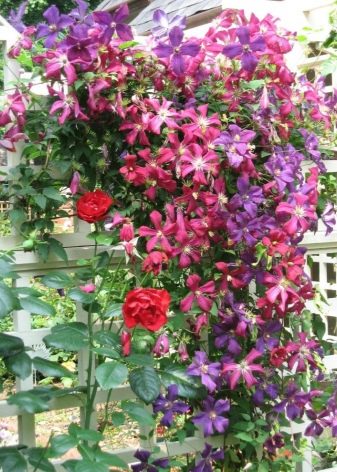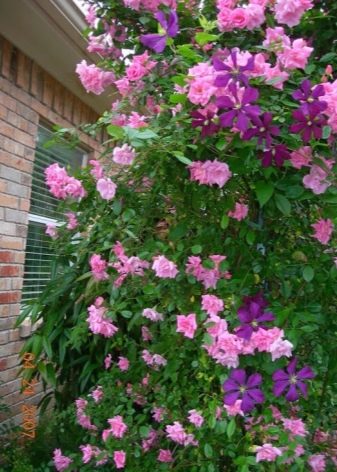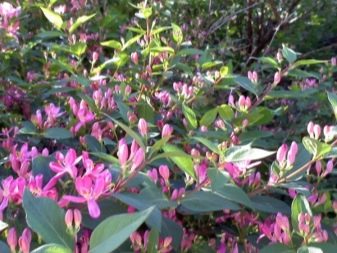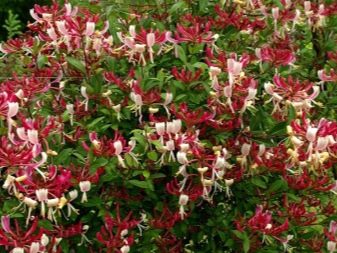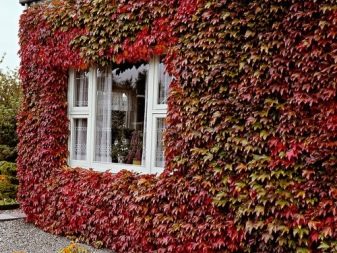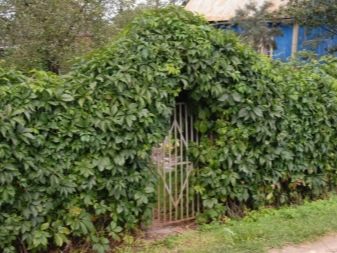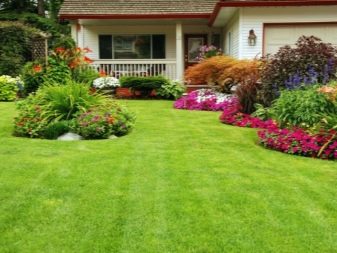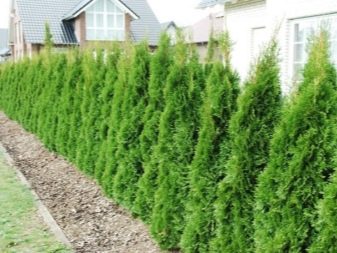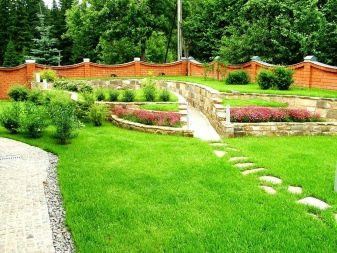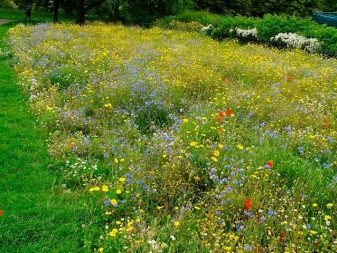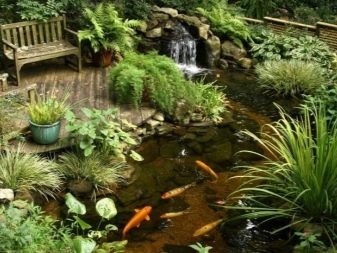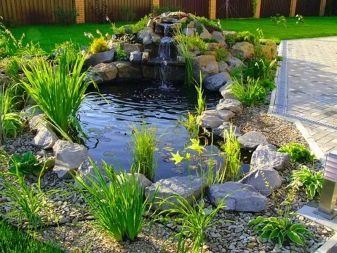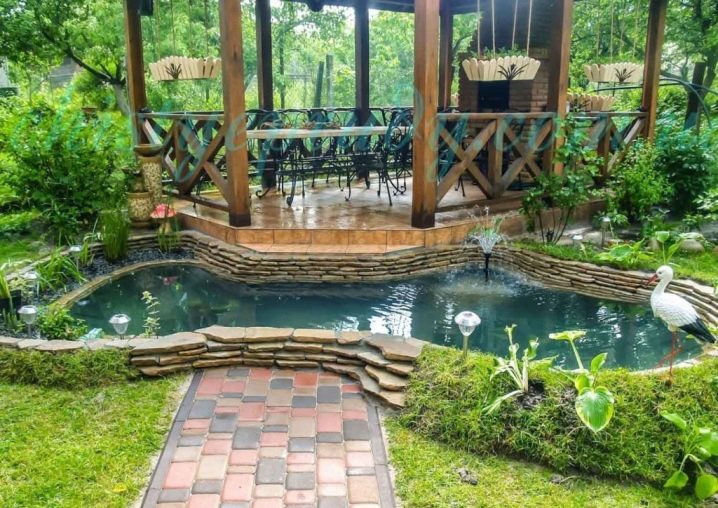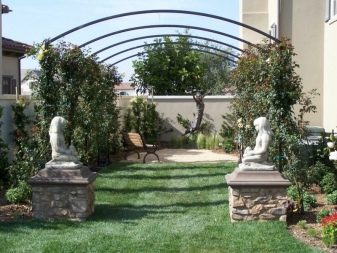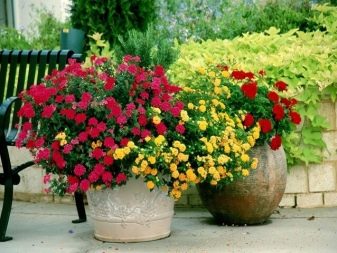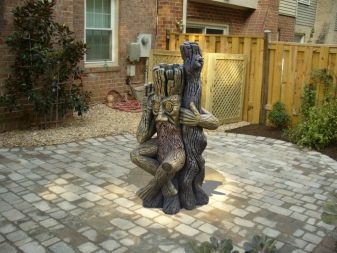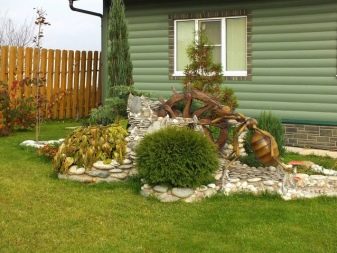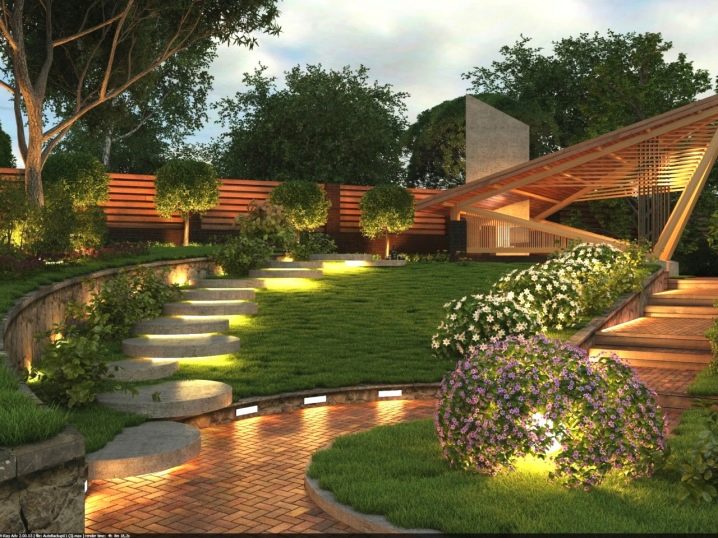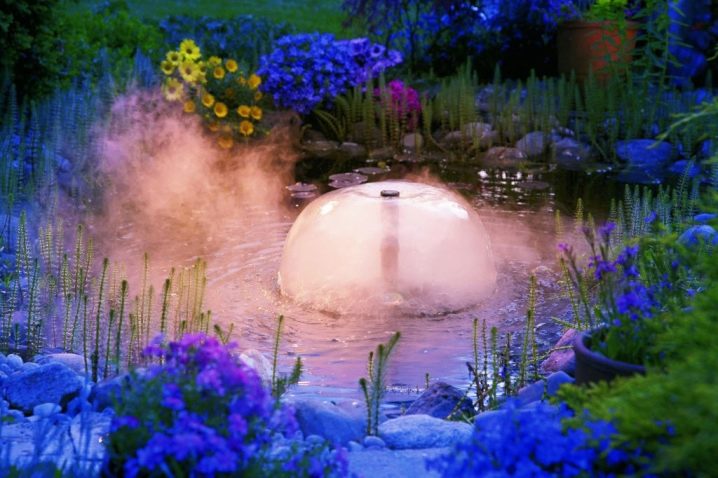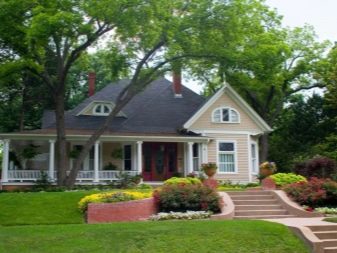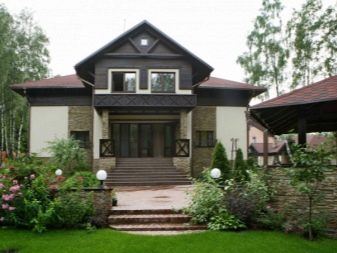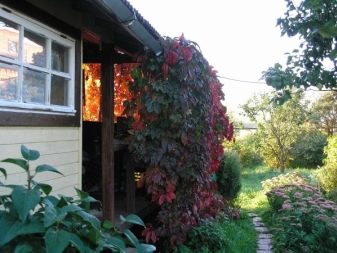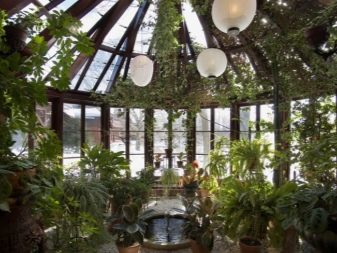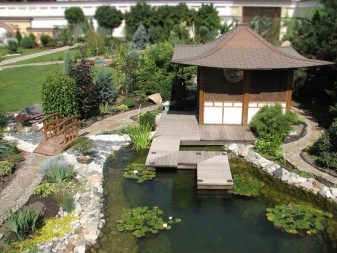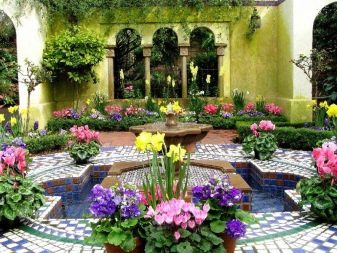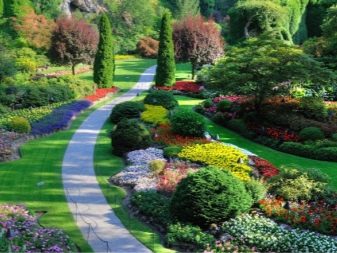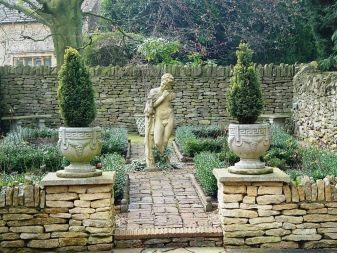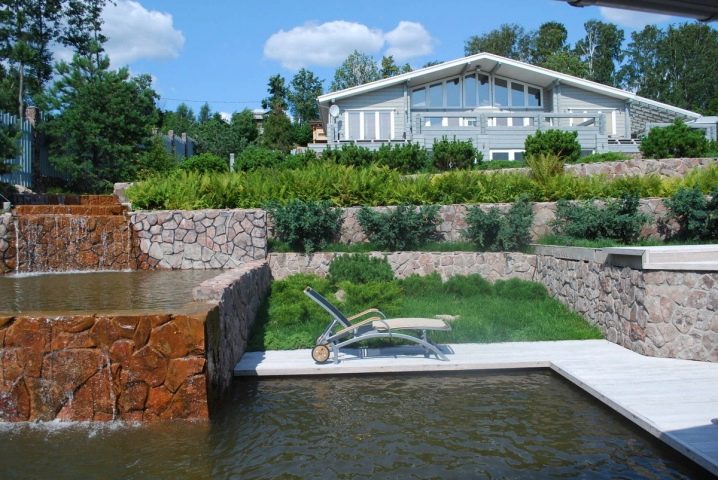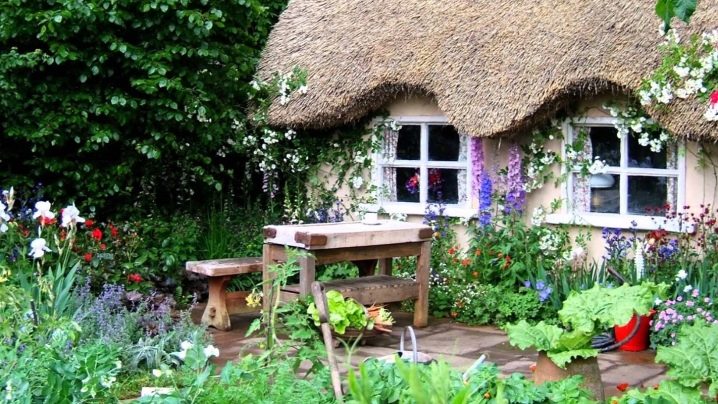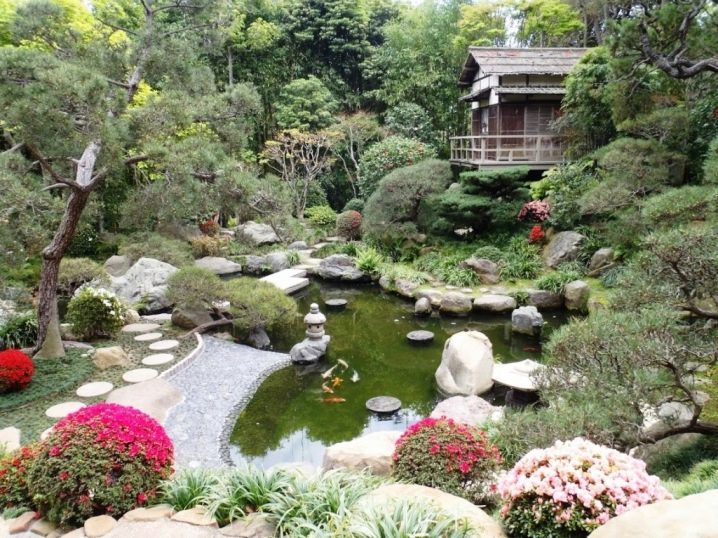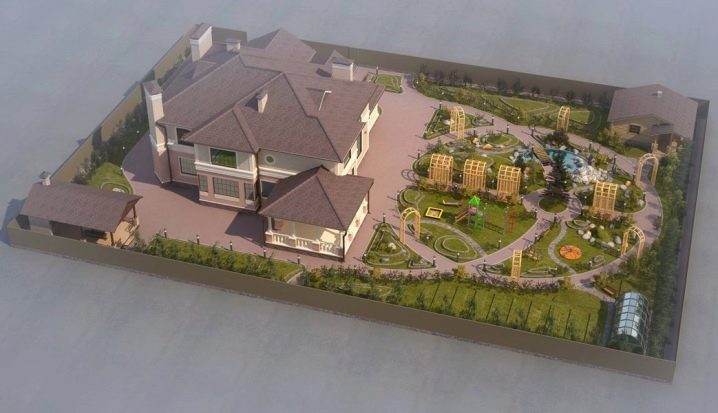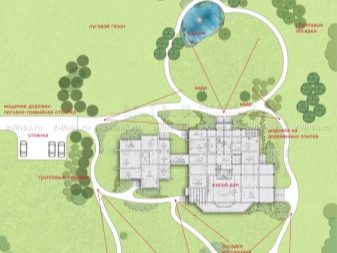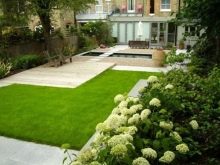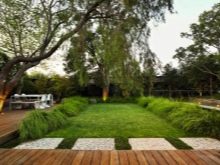Modern beautiful courtyards: landscape design around a private house
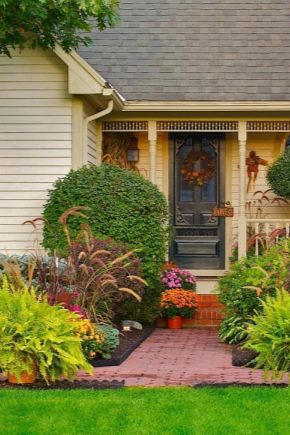
A private country house with a local area needs the proper organization of the yard. Landscape design is a complex and painstaking process. To create a truly picturesque exterior, you will have to spend no less effort and money than on building and finishing the house itself. But you will be satisfied, as the result will delight you for many years, and the comfort of the backyard will allow you to spend a lot of time in the fresh air in an atmosphere of bliss and bliss.
Special features
To create a landscape design around your country house, you can invite a professional who will create a project for you, and after agreement will begin to work directly.This option is suitable for wealthy and busy people who do not like to work on the earth, relying on the opinion of professionals in matters of design and style.
But to organize your own paradise with your own hands is to immerse yourself in the process of creativity and create a truly unique territory design that fully meets your personal requirements, using a minimum of funds.
Nowadays, all landscape tricks can be learned online absolutely free.
There is another way to save: you can buy very young plants. In this case, it should be borne in mind that it will take time for them to grow and strengthen. You will not see the final result immediately, but only in a few years, but such an investment in the future will keep your wallet in the present.
When buying young plants, keep in mind that as they grow, they will need more and more space. Before acquiring such a seedling, study the information on how an adult plant looks like, what parameters it achieves. When planting, leave each young sapling plenty of room to mature.
Competent landscape design not only creates a cozy place to spend time in nature, but helps to solve many issues of imperfection of the relief and the size of the site. So, a certain order of planting flowers, shrubs and trees will help visually increase the yard area, and the harmonious organization of the entrance zone can declare your hospitality and prepare for the guests in the house.
Climate and relief
Landscape design depends on the terrain. Climate and relief dictate their own rules, and if you can still do something with differences in the ground level, then the weather is always in its opinion.
Be sure to study the flora of the strip in which the house is located. Those plants that grow in their natural environment in your climate are best tolerated by winter frosts or very hot summers and high humidity. Specialists breeders are constantly working to display new varieties of plants that better winter and at the same time resistant to heat.
Some shrubs or flowers need to be closed for the winter to survive, for example, roses, which often freeze and are afraid of low temperatures, or thuja, which “burn” in early spring before the root system has thawed.Bright spring sun destroys the crown, so it is closed in the fall.
“Unsuccessful” relief of the site may complicate the task of creating an ideal design, but it will definitely add uniqueness. For a beginner, a smooth area without strong elevation changes is best suited. At desire level can be leveled, but the volume garden can become a highlight of your site.
It is easy to beat a small hill and organize an alpine slide on it, the depression is suitable for an artificial reservoir - a pond with ornamental fish and water lilies.
Difficult relief will help determine the zoning of the backyard territory, map out a place for a gazebo, sun beds, swings, a secluded bench, where anyone can read a book or have a dream.
In addition, descents and ascents can be beaten with beautiful ladders, which will add originality to the local area. Also for the territory under the slope, you can think of a system of communicating reservoirs, between which a stream will flow, and even small waterfalls organize uneven relief.
Many landscape design firms are specifically developing vertical projects.layout of the site, artificially create relief terrain according to the overall style of the site and the facade of the house. For example, a chalet-style house needs an imitation of alpine mountainous terrain.
Often, difficult terrain can cause stagnation of water in the spring during the period of active melting of snow and rainy autumn. Because of this, the roots of plants planted in lowlands can rot, and to avoid this, consider a drainage system for draining water.
Tips and recommendations for the drainage of the site will tell landscape designer A. Korovin in the next video.
Plot planning
Before you start buying the flower and plant seeds you like and erecting small architectural forms, draw a plan to stick with. A small drawing will help you understand how many trees, bushes and flowers you need, where you can best arrange a recreation area, how and where it is better to lay decorative paths to create the perfect landscape design. In the process of direct work, it is better to correct minor points than to redo everything.
If at your disposal a small area (about 6 acres), be sure to consider the size of the buildings, which are usually available in suburban areas.
Required are:
- House for living;
- Garage or parking space;
- Utility room (shed);
- Pergola or solarium type pergola;
- Tracks;
- Lighting elements;
- Green spaces;
- Elements of decor;
- Garden area;
- Garden area.
If the site is larger, the project may also include:
- Children's playground;
- Bathhouse;
- Pool or artificial decorative pond;
- Greenhouse.
Only after all the necessary buildings are applied to the paper, it is worthwhile to consider in more detail the design of a plan for planting green spaces. In order to be able to see the plan of your site in 3D-mode, use a special computer program for landscape design.
In the library of such resources there are all sorts of plants that the creators of the program have divided into groups by species and areola habitat.
Particularly noteworthy are projects designed to design territories of several hectares. Often, such spaces already have a beautiful and well-established natural landscape, which may include a natural pond and part of the forest. You can supplement it with the creation of a large orchard, shady linden alleys, several recreation areas with gazebos.But the house territory of the mansion or a small courtyard of the villa should be decorated with smaller plants and flower gardens.
Variants of separation zones
Proper zoning of the backyard territory allows you to solve many functional problems, as well as create a cozy atmosphere.
There are several main areas that should be visually distinguished from each other:
- Entrance or front;
- Parking area;
- Economic;
- Vegetable garden area;
- Horticultural;
- For an active and quiet holiday;
- For children's games.
Sometimes the proper location of the house on the site solves part of the problem. In this case, for example, the backyard, which is hidden from view, can be set aside for the economic and garden area. If this is not possible, then there is a not less cardinal way to isolate oneself - to build fences.
A wide gazebo with one blank wall can be an alternative opportunity to hide utility rooms. A hedge of densely planted shrubs or needles can be not only a beautiful decorative element, but also a way of zoning. Creating podiums and open terraces for pergolas and solariums, as well as recreation areas, can also be attributed to the methods of dividing the territory into zones.
The relief can help solve the problem with zoning.The construction of retaining walls on a multi-level site and finishing them, for example, with stone, looks very stylish and in a southern way.
Even at the planning stage of the plot, try to create a project in which the rest zone is at the maximum distance from the parking lot, then your sound cannot be disturbed by the sound of a running engine and exhaust gases.
Late in the evening, proper lighting will hide the economic and garden zone from the eyes, bringing to the fore the silence, harmony and decor of the relaxation area.
Track decoration
Garden paths are peculiar guidebooks connecting the elements of landscape design, small and large architectural forms into a common harmonious ensemble. These lines allow you to set the direction of movement for you and your guests, point out the advantages and hide the disadvantages of the site.
In the design of the tracks important importance is the overall style of landscape design and the facade of the house.
Already at the design stage it is worth thinking about the shape, width, material of the tracks. Decide on whether it will be tracks with straight or rounded corners, decorative, winding or designed exclusively for utilitarian functions.
Decorative options require more imagination and cost to implement, so these paths can be used only in the landscape gardening area and resting place. A coarse utilitarian - in the transport-access zone, between farm buildings for functional purposes.
The width of the decorative tracks can vary from half a meter to one and a half meters. These parameters are individual for each individual area and depend on its size. The material for creating paths can be stone, concrete, tile, brick, pebbles, rubble.
When choosing the material and design of the track, consider some factors:
- Soil soil;
- Possible seasonal ground movements;
- Ground water level;
- What is supposed to load on the track (walking or parking area);
- Intensity of operation.
With the direct construction of a decorative track, take care of drainage. In order to melt or rain water flow into the ground, the surface of the walkway is slightly inclined. It can be gable or single.
The road landscape canvas is divided by type of coating on hard and soft.The first type can be attributed brick, concrete, paving slabs, natural stone, the second - pebbles, gravel, rubble. There are combined types of tracks.
To arrange the area for parking, increasingly used geogrid.
The advantage of this method:
- Clean and well maintained;
- Sturdy construction withstands any weight;
- Even the parking zone is landscaped.
Garden paths can be made independently. The choice of materials is very large, but the technology is not the most difficult. Often the tracks are made of wood. This coating is not as durable as, for example, concrete, but it looks very stylish. Various fantasy elements enliven the site very much. The patterns laid out from small stones give fabulousness and originality.
It is important that the tracks are safe. Too smooth surface of the coating after rain can become very slippery and cause injury. Choose ribbed materials.
If the site has elevation differences due to the terrain, it is better to include elements with steps or whole staircases.
Gardening
The issue of landscaping is not an easy multitasking one. It is necessary to properly prepare the ground area for green areas and lawn, to study the types of plants that grow in your lane, take into account the period of flowering flowers, knowwhat the shrubs and trees look like in a mature state in order to competently work out a composition that will look harmonious in a few years and even decades, know the basic combinations for a possible neighborhood with the goal of competent watering and fertilizing the soil.
But the result will surely please you, because a beautifully designed plot is the pride of any amateur gardener.
First of all, it is necessary to determine the style - regular or natural. Regular implies a symmetrical arrangement of flower beds with flowers and ornamental shrubs along the center line. Often a round flowerbed with the most beautiful plants is established in the center.
Paths extending from the central alley, have the correct straight and radial shape. Flower beds in the form of rabatok are arranged along the paths, the paths themselves can be framed by a low, neatly trimmed living hedge of boxwood or thujas with a spherical crown, planted at the same distance from each other.
Plants for these beds are chosen noble. In spring, these are tulips, daffodils, crocuses and hyacinths, which are matched in color and size, so that the flowerbed does not look variegated, but harmoniously uniform. In summer, primroses replace hybrid tea or floribunda roses.Roses are complemented by large-flowered lilies. Lily divided into Asian species, tubular and la hybrids. In hybrids, la hybrids winter better.
Lilies and roses have a huge variety of colors, they are selected for harmonious shades and placed in flower beds of geometric shapes. The garden is filled with the aromas of these flowers. Lilies of the valley or hosts are planted in shady rabatka, curb roses in the sun.
Arranging a bed of continuous flowering, pick up such a set of perennials, which bloom follow each other throughout the season. In the spring - bulbous, in the summer - roses, lilies, clematis, hydrangeas, in the fall - Belgian aster, physalis, chrysanthemum.
Spruce, thuja, cypress trees with their correct form create vertical accents. In the center of the flower beds or at the end of the alley it will be interesting to look at the fountain or decorative waterfall, which will give a romantic mood to the whole site.
In the green foliage, small architectural forms and sculptures look very harmonious, and the benches, placed in beautiful places, will allow you to relax and enjoy the beautiful view.
In the design of the natural type of plants are arranged in random order, symmetry is consciously avoided here.The tracks have an irregular shape, can vary both in material and in width in accordance with the landscape. This design area is successfully combined with uneven terrain. This is the case when the disadvantage can be turned into dignity. In the lowland it is worthwhile to arrange a pond, on the hillocks arrange picturesque compositions of conifers, bright colors, and ornamental shrubs.
The compositions are made up of a vertical accent - spruce, pine, thuja, cypress, which are located in the background; medium-sized plants with beautiful foliage or flowers are planted in the second row. These can be barberry tunberg with yellow, burgundy, light green foliage, which is shaded by silvery needles. Floribunda roses or groundcovers make up the middle row, their flowering is supported by wormwood, catnip, sage.
These simple perennials with their tenderness frame thick brushes of pink flowers. The creeping juniper will become a picturesque frame for such a bed. His plant and along the tracks. Paws overlook the path itself, hiding the edge, creating a picturesque forest trail.
It is possible to decorate the local area with rockery.Select a place on a hill or on a flat area. Drainage is made, boulders are laid out, earth is poured between them, and perennial plants are planted in these “pockets”. It can be a composition in the form of a dwarf coniferous forest, junipers, miniature pines, thujas, and spruces. Rockery, planted with ground-cover perennials, looks impressive and unpretentious in the care. Molodilo, thyme, sprinkling, saxifrage and ornamental grasses will be appropriate in the compositions.
Rockery will organically look at the design of the yard in the Japanese style, here the whole emphasis is placed on the beauty of the stone, so the choice of boulders should be approached especially carefully. Plants in this case are used conifers, dwarf forms, sedges and cereals.
Thin multi-colored spikelets of cereals give sophistication and thrill to many plant ensembles. Their height can be selected from 50 cm to 1.5 meters. The grasses are varied in colors - gray, maroon, golden colors dilute the greens of the foliage of garden plants. Cereals have one unpleasant feature - they are very aggressive towards other plants, so it is worth considering well whether this type of grass is needed on the plot.
For this flowerbed will have to constantly keep an eye out to prevent the spread of the invader.
For true aesthetes, there is an alpine slide. Its creation is a very laborious process, requiring the study of special literature, but the result will bring inexpressible satisfaction and pride. Natural stone is laid out steps at each other, without the formation of pockets, the cracks are filled with sandy soil and fine gravel, the analogy of natural rock formation is created. In between, stones are rooted by drought-resistant miniature plants, their growth is extremely small, the flowers are homely and shallow, but on the whole a magnificent view is obtained.
Shrubs such as barberry with a sweet caramel flavor and many small flowers will become the vertical accents and decoration of the site during flowering. The spreading shape of the barberry creates a natural round cap with a diameter of about 3 meters.
Black elderberry has a graceful form and does not require a haircut, in the spring it is covered with clusters of flowers with an unusual smell, in the autumn with tassels of berries, which combine medicinal properties with toxic substances.
Similar to her, mountain ash and chokeberry or black chokeberry - one with clusters of scarlet color, the other after spring lush flowering is covered by autumn with black berries full of vitamins. These slender shrubs grow to 4 meters in height and do not require pruning.
Chubushnik or Russian jasmine is better placed in the background. After the most fragrant flowering, it turns into a nondescript bush with a height of 2-3 meters, with time it acquires a “shaggy” look and requires formation.
Beautiful lilac is good and a separate tree, and in the hedge, but here you need to timely remove the growth. In garden breeding forms, the shoots are not as aggressive as those of natural species.
Kalina, in addition to a wonderful flowering, has a good bush habit, does not require formation, in the fall the foliage acquires a purple palette, in winter the flaming clusters effectively contrast with the whiteness of snow. It is good both as a tapeworm and as a hedge.
Thuja, juniper and cypress trees will decorate the medium plan. Tui is better to choose the western group, they are the most winter-hardy and have a large species diversity. Medium-high yellow Aurea, Yellow Ribbon, the majestic Columna and Holmstrup, the spherical Danica, Khozeri will find their place in garden compositions or as tapeworms.
Thuy Brabant and Smaragd are indispensable for hedges.
Perfectly amenable to haircut, which allows you to create from them green shapes for decorating the garden. Cypresses and junipers have a picturesque natural shape, which gives the natural outlines of garden ensembles. Outside they can be decorated with flowers.
Vertical gardening complements the visual variety of garden flora. These are various climbing vines on supports. The palm among the beautifully flowering vines belongs to clematis. They are placed on arches or metal mesh supports, often in a duet with roses or hosts, which cover the nondescript lower part of the vine.
Honeysuckle Capricoleum has a strong sweet aroma and beautiful, like the eastern chrysanthemum pink flowers.
Girlish grapes are indispensable for decorating unsightly buildings. The living wall can be grown from Chinese magnolia and actinidia and get a harvest of useful vitamin berries.
Paths and flower beds, trees and vines are good on a lush green background, which gives a dense lawn. It needs to be watered regularly, cut at least once every two weeks, it is undesirable to play outdoor games on it so that there is no rubbing. Such bald spots happen after winter, then lawn repair is needed.
In the garden, it is enough to tin the territory, that is, to regularly cut green vegetation before the formation of a green carpet, which can be done in a couple of months and 4 haircuts. Such a grass carpet is strong, you can lie on it, hold competitions, it does not require watering.
You can arrange a Moorish lawn. The territory is dug up, weeds are removed. The whole area is sown with beautiful flowering herbs. Such a lawn has a significant drawback - it is short-lived, loses its decorative qualities after flowering.
Reservoirs
Do not neglect the creation of a reservoir or a stream on your estate. Manufacturers offer a lot of ready-made options for arranging a small pool or pond.
The pond can be quite small - less than 1 meter in diameter, up to large ponds, where you can fish and swim, and sunbathe on the beach or sit by the fire in the evening. The shore of such a pond is lined with cereals, sedge, hosts, irises, daylilies. Such a reservoir will harmoniously look next to a house built of wooden logs or with stone facades. From the wooden terrace you can admire the glare of water in the sun and drink tea.
The swimming pool, tiled with sun loungers and awnings to match the finish of the house, will suit the architecture of the house in the high-tech style.
The Baroque mansion will decorate the classic pool with a fountain, surrounded by a flower garden with benches around.
For small yards, you can arrange a small pond with moisture-loving plants around or frame the edges with a stone. The pond itself is decorated with real or artificial water lilies.
Fans of babbling water near the pond should install a mechanism to create a stream that will drain into the pond. Beautifully arrange it with pebbles, stones and plants is not difficult. Nearby you need to place a place to rest: a gazebo, barbecue facilities, a bench or garden chairs with a table.
Decorative elements enliven the landscape and enhance aesthetics. Pompous parade areas are decorated with large sculptures of romantic or biblical themes, large flowerpots with conifers or roses.
The democratic design of the local area allows the installation of one or two modern architectural forms in harmony with the plant environment.
Lighting
The organization of lighting is thought out at the planning stage, since electrical cables must be reliably insulated from mechanical damage.
The courtyard, walkways, outbuildings and recreational facilities are subject to mandatory lighting. Lanterns on the plot should not be made high, so as not to create a sense of urban development, it is desirable to withstand the height of up to 1 meter. This arrangement of lamps gives a soft relaxing light, well lit the level of the lawn with flowers and the path itself. Flower beds and ponds can have a similar highlight to create spectacular nightly compositions.
The lighting does not have to be electric; for a small area there are enough solar-powered lanterns.
Combination with buildings
For the correct perception of the landscape as a whole, decorative compositions from plants should be harmoniously combined with the house and outbuildings. This zone includes the entrance to the house, porch, walkway from the gate. Registration of the ceremonial zone is of great importance. This is the business card of the infield.
The most beautiful and noble plants are planted in this part of the yard. Flower beds are made in the style of the main house. Compositions with thujas and roses adorn the classic parade areas. Bright flower beds of irises, Belgian asters, sage oak, chamomile garden planted along the paths of houses in rural style.
The porch and porch are decorated with beautifully flowering vines: clematis, climbing roses, petunias in hanging pots.
Tropical plants are selected for the winter garden, which are in harmony with the nearby thujas and cypresses in ceramic pots. The placement of cacti and palm trees in tubs in front of the entrance to the winter garden helps to add southern exoticism in the summer. In winter, potted plants are cleaned in the room.
Styles
Landscape design styles determine the selection of plants. Style, in turn, is determined by the architecture of buildings and corresponds to the character of the owners.
- English or landscape style speaks for itself and models the natural beauty of nature. Elements of this design include a pond with a willow on the shore and benches, tracks made of sand, and sawn wood or stone. Plants are planted in groups: daffodils, tulips, mallow, roses.
- Classic stylewhere everything is subject to symmetry, it is decorated with fountains, sculptures, spruce trees, trimmed thujas. From the flowers it is better to choose begonias, roses, salvia, phlox. Requires a spacious area.
- Scandinavian style Suitable for landscape design of most modern courtyards of a private house.In this style, you can arrange and a small courtyard, and a large private plot. Paved paths, ponds trimmed with stone and hosts, vertical accents of conifers are located on spacious glades, fences are decorated with hedges.
- Rustic style, or country - the most popular and simple version of the design of the local area. It is possible to decorate the site with various items of peasant life, wattle, fragrant beds of mint, thyme, sage are welcome. Ornamental shrubs of temperate latitudes are widely used: viburnum, shadberry, elderberry, mountain ash, lilac, chubushnik.
- Modern in landscape design, it is the maximum replacement of plants with small architectural forms, an obvious release of building structures.
- Japanese landscape - this is the choice of philosophers. There is a lot of natural beautiful stone, poor vegetation of unusual forms, bonsai, decorating with feng shui attributes. Can be placed on a small area.
- Today, the most sought-after design style of the yard has become minimalism. There are few plants, but each of them has special features for creating a vivid picture,framed by wooden structural elements.
The pure smooth surface of a geometrical reservoir, the correct paths passing into terraces is pertinent.
Projects
By installing the appropriate program on your home computer, you can independently choose the appropriate site layout.
The project of improvement of the local area in the regular style.
The natural style of the site design smoothes the rigidity of the front area.
Vertical accents of birch and willow adorn the composition with elements of rural style.
Beautiful ideas
- The modern design of the front area.
- Old trees organically fit into the minimalist design of the site.
- The corner zone is spectacularly decorated in modern style.
